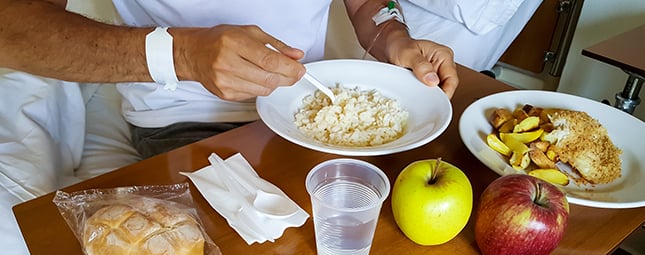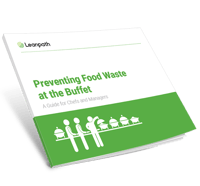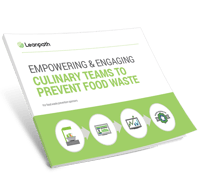How healthcare foodservice is adapting

CBORD, an integrated technology provider, hosted a webinar focusing on the many challenges that COVID-19 poses for healthcare foodservice professionals. Panelists from Indiana University Health and Duke Raleigh Hospital shared stories and strategies they've implemented to keep their patients and teams safe and nourished amid this crisis. We've included our key takeaways from this valuable call and a link to the full webinar for you.
Here's what we found insightful:
No visitors - no retail. No meetings - no catering.
Retail locations are closed. Furniture has been removed from cafeterias, break rooms, and lobbies to encourage social distancing. A shift in labor to pre-portioned and pre-packaged goods and to sell items packaged for convenience. No more salad bars as they know them; every item in its own container. Directors are coping with disruption in the supply chain and learning how to prep the pantry for appropriate stock and emergency inventory.
(From a food waste point of view, these changes could be useful. Cafeterias, catering and salad bars are all prime sources of food waste. Pre-packed and pre-portioned items still leave the opportunity for overproduction. With the need to maintain emergency inventory of food, avoiding wasting food is critical.)
Shared anxieties, reduce anxiety.
Frontline foodservice workers are exposed to the same information as everyone else. Some of it accurate, some not. It’s important to have constant communication with staff that reinforces accurate information. Four comms a day was recommended– two emails and two stand ups. Talking about the rumors versus what protection staff need, and will get, and communicating staff changes, daily, were two big topics addressed. The general feeling was that many of the staff have similar questions so having extra meetings or huddles makes sense and helps ease anxieties.
Patient feeding hasn’t changed, the way it’s served has.
Panelists said they are seeing needed partnering between their staff and nursing, where, for instance, nurses are now gathering patient dining trays to clean rooms and ensure conservation of PPE supplies. Foodservice staff are taking measures to provide extraordinary cleanliness around prep areas and follow CDC guidelines around wrapped single use flatware (and when not to use it). They are adopting shorter menu cycles and potential opportunities to use a central kitchen. Clinicians work from home using technology to interview patients, except for one day a week for visual consultation.
We’re grateful to have had an inside look at what this time truly looks like for our friends on the front line. Thank you to panelists Jeff Ketcham, Indiana University Health’s senior systems analysts of nutrition services, and Lisa Marker, assistant director of nutrition services at Duke Raleigh Hospital for your candor and time and CBORD for hosting.
Download these guides and get started
on your food waste prevention journey today!
 |
 |
 |
| 20 Waste Cutting Tips Every Foodservice Chef Should Know | Preventing Food Waste at the Buffet: A Guide for Chefs & Managers | Empowering & Engaging Culinary Teams to Prevent Food Waste |